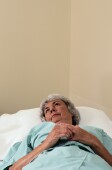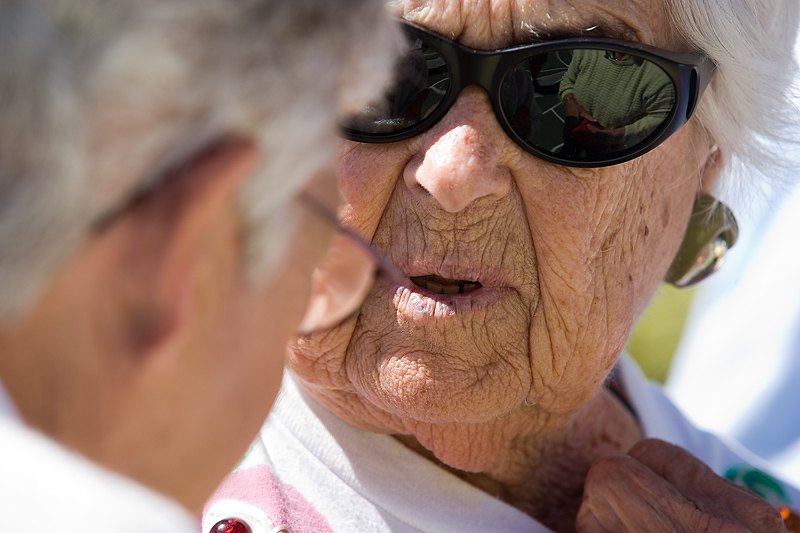
WEDNESDAY, Jan. 18 (HealthDay News) — With the Alzheimer’s epidemic predicted to reach crisis proportions as the U.S. population ages, a panel of experts is meeting for two days to draft a plan to combat a disease that is fast emerging as one of the nation’s biggest — and costliest — health threats.
The goal of the plan is to improve diagnosis, buttress support and training programs for families with a loved one stricken with the mind-wasting disease, and develop better treatments — and possibly even a cure — by 2025.
“The idea behind the plan is to develop a coordinated effort to solve the Alzheimer’s problem,” said William Thies, vice president for medical and scientific affairs at the Alzheimer’s Association.
“We recognize that the demographic imperative is going to happen with the peak of the epidemic in 2050,” Thies said. By that date, it’s estimated that 16 million Americans may be suffering from Alzheimer’s disease, he added.
“We are struggling to manage the number we have now, which is a little over 5 million. So you can imagine with three times as many [patients], current systems simply can’t manage that increase. It points to a very bleak future if we don’t do something pretty quickly as the baby boom population starts developing more Alzheimer’s disease,” he said.
“Using current systems, this is simply unmanageable,” Thies said.
Over the next two days, the advisory council of experts is meeting in Washington, D.C., to review a draft of a plan proposed by the U.S. Department of Health and Human Services. The draft was created in response to the National Alzheimer’s Project Act, signed into law one year ago by President Barack Obama.
The plan will include everything from increased scientific research into causes and treatments for Alzheimer’s, to how Medicare would reimburse doctors, and everything in between, Thies said.
To make this happen it will cost some $2 billion a year, Thies said, adding, “It’s clear we have to upgrade our effort.”
“We are going to have a plan. We don’t know what it’s going to look like. The [Alzheimer’s] Association is committed to get the best plan that is possible. And if the plan isn’t good enough we will not keep that a secret,” he said.
But some in the forefront in the fight against Alzheimer’s disease worry that the plan won’t be enough.
“While it is always helpful to call attention to the disease, I worry that efforts like these are mostly window-dressing,” said Dr. Sam Gandy, Mount Sinai Professor of Alzheimer’s Disease Research at Mount Sinai Hospital in New York City.
“There are no funds attached, and there are no basic scientists on the panel. I don’t see how they can seriously discuss cure without basic science input. I would also say that 2025 is way, way too optimistic,” he said.
Greg M. Cole, a neuroscientist at the Greater Los Angeles VA Healthcare System, said the panel’s goals are certainly worthy — to be able to diagnose the disease early and provide support for caregivers and their families.
“But many people won’t seek early diagnosis without more powerful treatments that do more than provide temporary symptomatic relief,” he said. “Who wants someone to confirm a dreaded diagnosis with no expectation that they can beat this disease?”
That reality has to change and treatments must be affordable, Cole said.
“The diagnostic methods that have received the most government support use expensive imaging methods that would cost a fortune to implement on a mass scale. We need cheaper methods to screen an aging population,” he said.
But the biggest challenge, Cole said, is the dearth of proven therapies to treat Alzheimer’s.
“Most of the current approaches in the pipeline — like passive immunization with antibodies — are likely to be very expensive at tens of thousands of dollars per year per patient,” he said. “Therefore they are not very suitable for prevention in an era of limited resources.”
Even if treatments work to stabilize the disease and modestly improve symptoms, these approaches seem likely to increase — rather than decrease — the medical costs of the disease to government and insurance providers, Cole said.
“Drug companies will invest far more than government in finding new treatments. If the past is any guide, they will provide better tools for disease management but with increased costs,” he said.
A plan that addresses the medical costs of dementia in an aging population has to center on prevention, Cole said. “There should be far more government resources aimed at a serious efforts at finding and implementing low-cost prevention methods,” he said.
Currently, an estimated 5.4 million Americans have Alzheimer’s or a similar dementia. Alzheimer’s is the sixth-leading killer in the country, according to the U.S. Centers for Disease Control and Prevention.
In a related development, under new autopsy guidelines drafted by the U.S. National Institute on Aging and the Alzheimer’s Association, pathologists are encouraged to look for Alzheimer’s-related brain changes in dead people who may not have exhibited memory loss or other symptoms of dementia.
Previous guidelines, adopted in 1997, called for an autopsy check when a dead person had a diagnosis of dementia to determine if Alzheimer’s had contributed to the dementia.
“The new criteria no longer require a dementia diagnosis while the person was living, as studies suggest that Alzheimer’s develops years before it becomes clinically evident and research has revealed that the brains of even cognitively normal people may have Alzheimer’s-related brain changes,” the NIH said in a news release Wednesday.
An overview of the revised guidelines is published online Jan. 18 in Alzheimer’s & Dementia: The Journal of the Alzheimer’s Association.
More information
For more on Alzheimer’s disease, visit the Alzheimer’s Association.

